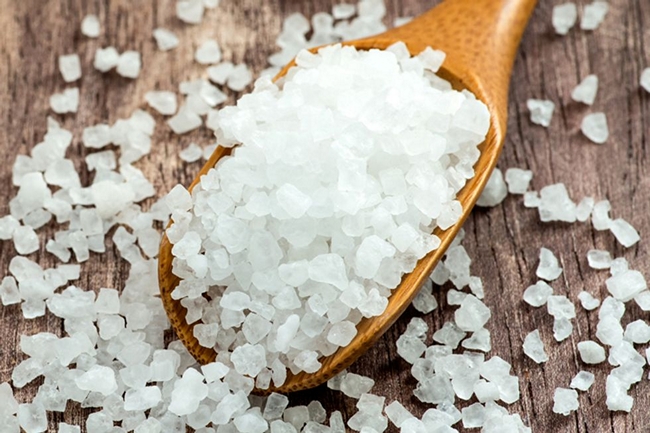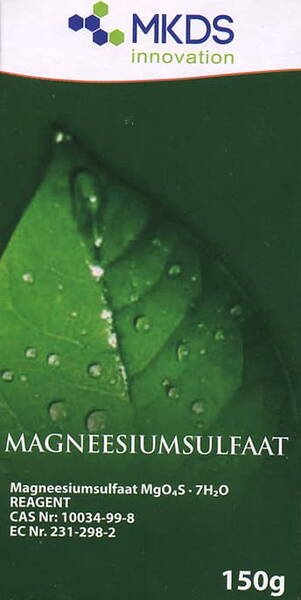Your shopping cart is empty!
Epsom Salt (Magnesium sulfate)
Epsom Salt (magnesia sulfate).
Magnesium sulfate is an effective magnesium sulfur-containing fertilizer.
Composition: MgO - 16.4%, SO3 - 32.5%.
Properties:
- increases productivity
- improves the taste of vegetables by increasing the content of starch and vitamins in fruits.
The lighter and more acidic the soil, the more acute magnesium deficiency can be. Among garden crops, tomatoes, cucumbers and potatoes react most sharply to magnesium deficiency.
Signs of a lack of magnesium in plants: yellowing of the leaf areas between the veins, after which the leaves gradually darken and die off ...
Magnesium sulfate is used in conjunction with nitrogen and phosphorus fertilizers in the spring when preparing the soil:
- for cucumbers, tomatoes 7-10 g / m2
- for other vegetable and ornamental crops 12-15 g / m2
- for fruit trees 30-35 g / m2 of the trunk circle.
Root dressing during the growing season is carried out with a solution of magnesium sulfate at the rate of 25 g / 10 l of water, every 15-20 days. Foliar dressing is carried out by spraying with a working solution of magnesium sulfate 15 g / 10 l of water.
Depending on the culture and the size of the vegetative mass, the consumption of the working solution during spraying is:
- for vegetable, annual flower crops 1-1.5 l / m2
- raspberries, currants and other shrubs 1.5-2 l / m2
- fruit trees 2-3 liters for a young tree and 5-10 liters for an adult tree.
Magnesium is a part of chlorophyll, activates a number of important enzymes of respiration and photosynthesis in tissues. With its lack, chlorophyll is destroyed, and plants have “marbling of leaves” - they turn pale and become variegated.
Magnesium sulphate can be a source of magnesium.
Magnesium sulfate is an effective magnesium sulfur-containing fertilizer.
Composition: MgO - 16.4%, SO3 - 32.5%.
Properties:
- increases productivity
- improves the taste of vegetables by increasing the content of starch and vitamins in fruits.
The lighter and more acidic the soil, the more acute magnesium deficiency can be. Among garden crops, tomatoes, cucumbers and potatoes react most sharply to magnesium deficiency.
Signs of a lack of magnesium in plants: yellowing of the leaf areas between the veins, after which the leaves gradually darken and die off ...
Magnesium sulfate is used in conjunction with nitrogen and phosphorus fertilizers in the spring when preparing the soil:
- for cucumbers, tomatoes 7-10 g / m2
- for other vegetable and ornamental crops 12-15 g / m2
- for fruit trees 30-35 g / m2 of the trunk circle.
Root dressing during the growing season is carried out with a solution of magnesium sulfate at the rate of 25 g / 10 l of water, every 15-20 days. Foliar dressing is carried out by spraying with a working solution of magnesium sulfate 15 g / 10 l of water.
Depending on the culture and the size of the vegetative mass, the consumption of the working solution during spraying is:
- for vegetable, annual flower crops 1-1.5 l / m2
- raspberries, currants and other shrubs 1.5-2 l / m2
- fruit trees 2-3 liters for a young tree and 5-10 liters for an adult tree.
Magnesium is a part of chlorophyll, activates a number of important enzymes of respiration and photosynthesis in tissues. With its lack, chlorophyll is destroyed, and plants have “marbling of leaves” - they turn pale and become variegated.
Magnesium sulphate can be a source of magnesium.













